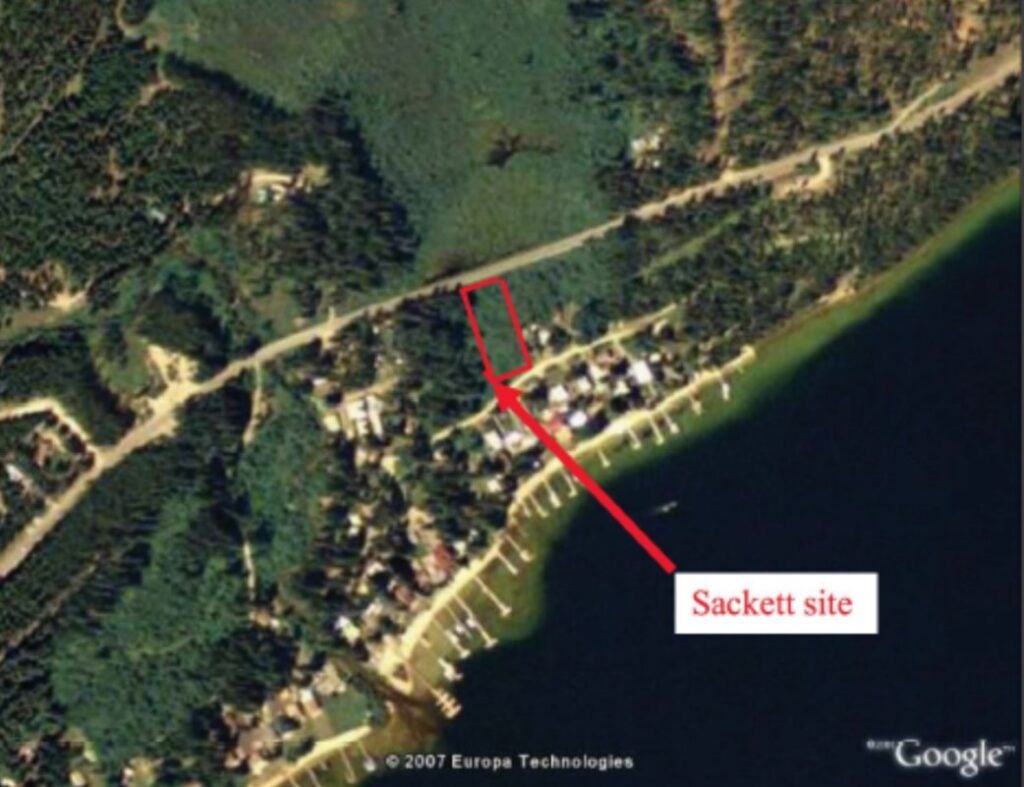What Does Sackett v. EPA Mean for Clean Water?
A lawyer analyzes the Supreme Court's ruling.

This page was published 2 years ago. Find the latest on Earthjustice’s work.
The Supreme Court just ruled that as many as half of the 118 million acres of wetlands in the U.S. are no longer protected by the Clean Water Act, embracing the decades-long demands of mining companies, the fossil fuel industry, reckless developers, and other big polluters. The court’s decision in Sackett v. EPA puts our communities, public health, and local ecosystems in danger. Earthjustice Director of Strategic Legal Advocacy Kirti Datla analyzed the ruling on Twitter.
Here’s a transcription of her thread breaking down what it means and how it could enable further attacks on environmental law.
The Supreme Court decided Sackett v. EPA today. It’s bad, for all the reasons you might think an opinion about the Clean Water Act from this Court would be. But it’s particularly bad because of the seeds it plants for future attacks on statutes like the CWA.
What’s this case about? It’s about the Clean Water Act, which was passed in the 1970s to restore and protect our Nation’s waters. Specifically, this case is about what wetlands the CWA protects, and which wetlands are left unprotected.
Why should you care? Wetlands are essential. They store water to prevent and mitigate floods, filter pollutants before they reach other bodies of water, support forestry, food and seafood production, and recreation, and more.
Ok, what’s the legal question here? Basically, the CWA prohibits dumping pollution into “navigable waters,” a term that is defined to mean “waters of the United States” (WOTUS for shorthand). The case turns on what WOTUS means.
Everyone agrees that the term covers *some* wetlands. That’s because the CWA elsewhere refers to “navigable waters . . . including wetlands adjacent thereto.” This makes it clear that WOTUS “includ[es]” adjacent wetlands. That’s where the agreement ends.
The Court splits 5-4 over the definition of adjacent.
Five Justices say it means a wetland must have “a continuous surface connection to” a water body like a stream, lake, or ocean such that there is “no clear demarcation” between the two.
How does the majority get there? It says that because wetlands are “included” in “waters of the United States,” they must qualify as a WOTUS in their own right.
The other four Justices (Kavanaugh, Sotomayor, Kagan, and Jackson) rely on the ordinary meaning of a pretty ordinary word to say that “adjacent” means, basically, very close to. Why does this matter? A few pictures of the area at issue in this case show why.

This image from the amicus brief of the Idaho Conservation League shows that the wetlands on the Sacketts’ property are connected to the wetland across the road and the lake nearby. (Cale Jaffe / Environmental Law and Community Engagement Clinic, University of Virginia School of Law)

The wetlands on the Sacketts’ property.
You don’t need a science degree to know (and the record shows) that the wetlands on the Sacketts’ property are connected to the fen (wetland) across the road and the lake a football field away.
As Justice Kavanaugh points out, it shouldn’t matter that a road, or slight rise in the land, visually demarcates a wetland from another body of water. The “scientific evidence overwhelmingly” shows that such wetlands still affect and protect downstream waters.
The majority’s decision is terrible news for those who care about clean water. You’ll hear people say, “Things will be fine! States will step up!” No. Nearly half of States borrow the CWA definition, so anything that isn’t a WOTUS isn’t protected.
But it’s also terrible news for people who care about having a government that can function and protect our health and safety. This is another case where *how* the Court reached its decision was as important as the outcome itself.
Remember: This Court calls itself textualist. A textualist judge says she just reads the words of a law when deciding what it means, without considering, e.g., what Congress was trying to achieve. Its defenders say it prevents judges from ruling based on policy views.
But the majority doesn’t just “read the law” in its opinion. After it explains how it interprets “adjacent,” the majority goes out of its way to invoke two so-called clear statement rules.
What’s a clear-statement rule, you ask? It’s a rule that put a thumb on the interpretive scale against a certain outcome. A judge doesn’t just read a law and ask what it means, she asks if Congress spoke loudly enough for her to believe it *really* meant what it said.
In practice, these rules shift power away from those who write laws (Congress) and implement them (the Executive Branch) to those who interpret them (courts). This should sound familiar if you followed West Virginia v. EPA.
That’s because of all the wiggle room they introduce. Does a rule even apply? If so, how clear does Congress need to be? And how do you know if it’s been clear enough? As a result, these rules re-introduce room for policy decisions that textualism is supposed to cut off.
So, what outcomes do the majority’s two clear statement rules tip the scales in favor of?
First, the majority says Congress has to be “exceedingly” clear if it “significantly alter[s] the balance between federal and state power and” government power “over private property.” This tips the scales against the federal government, and in favor of property owners.
As Justice Kagan explains, this rule operates as a “thumb on the scale for property owners — no matter that the [CWA] is all about stopping property owners from polluting.”
And as Justice Kavanaugh explains, it isn’t clear why this rule applies. Given that “the Federal Government has long regulated . . . adjacent wetlands,” there’s no alteration of the balance of power between the federal and state governments here.
Second, the majority says that a clear-statement requirement exists because some CWA violations are crimes, requiring it to side against the government in any interpretive dispute. This puts a thumb on the scale against the government when it acts to carry out a statute.
As Justice Kavanaugh points out, the majority uses that rule as an excuse to deem a term that is clear in the CWA–adjacent–to be ambiguous. In other words, because “adjacent” isn’t super, duper clear, the Court has an excuse to reject the government’s interpretation.
Why is the majority bothering to do all of this? The answer isn’t hard to find. It just doesn’t like the CWA. It describes it as a “weapon.” It minimizes the CWA, describing one of its core programs as about regulating “moving dirt.”
As Justice Kagan put it, these “pop-up clear-statement” rules give the Court a way to “cabin the anti-pollution actions Congress thought appropriate” by appointing “itself as the national decision-maker on environmental policy,” not the legislators or Presidents we elect.
The majority’s reasoning doesn’t just affect this case, or even just environmental statutes. Like the major questions doctrine in West Virginia v. EPA, the opinion in Sackett gives those who want to attack the statutes that protect our health and safety new ammunition to do so.
Follow Kirti Datla on Twitter @kirti_datla.
Earthjustice’s Strategic Legal Advocacy team identifies and addresses cross-cutting changes in judicial doctrines that affect our clients’ ability to vindicate their rights. These include legal doctrines affecting justiciability, jurisdiction, the scope of federal power, and judicial review of agency actions.